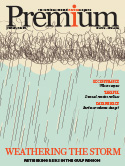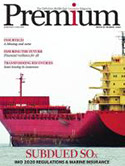Renewals: Bifurcated market in some sectors
January renewals reflected a healthy but evolving market as reinsurers adjusted risk appetite and pricing thresholds for certain sectors in response to ongoing and emerging challenges, according to Guy Carpenter.
“The changing nature of risk fundamentally influences reinsurers’ view of pricing and capacity allocations,” said Dean Klisura, president and CEO, Guy Carpenter. “It is clear from the January 1 renewals that strategies are adjusting to account for these factors. Cedents’ views, supported by portfolio data, will continue to drive renewal outcomes. This emerging reality further emphasises the critical nature of our advisory role. We will continue working closely with our clients to help them manage this shifting environment effectively.”
Key aspects of the renewals included: Placements were ultimately orderly once terms were issued and market participants effectively traded through the dynamic environment; differentiation continued to increase across reinsurers’ views of risk and focus on individual placement characteristics.
Conditions were bifurcated between non-loss-impacted and loss-impacted programs. Programs impacted by loss or presenting greater risk to reinsurers experienced more protracted and challenging renewals.
Price dependent, capacity was ample across most lines, although it was more constrained for retrocessional and frequency-exposed property as well as cyber aggregate programs.
The renewal process was later than normal in some sectors including property, lagging up to 14 days behind typical timings for the period.
Commenting on the renewals, David Priebe, chairman, Guy Carpenter, said: “The reinsurance market is evaluating a broad spectrum of forces, including climate change, cyber threats, core inflation, social inflation, and the continued evolution of frequency and severity of catastrophe losses. While reinsurers reassessed underwriting strategies, resulting in a late and varied price discovery process, outcomes were successful, and Guy Carpenter was able to support its clients in what has proved to be a very dynamic marketplace.”
Overall, there was ample capacity in the global property sector to complete programs, with greater market appetite for non-loss-impacted upper layers. Capacity was more constrained on lower layers, aggregates, multi-year and per risk, particularly if loss impacted. On the global casualty front, portfolio performance and underlying rate movement were critical factors at renewals.





































